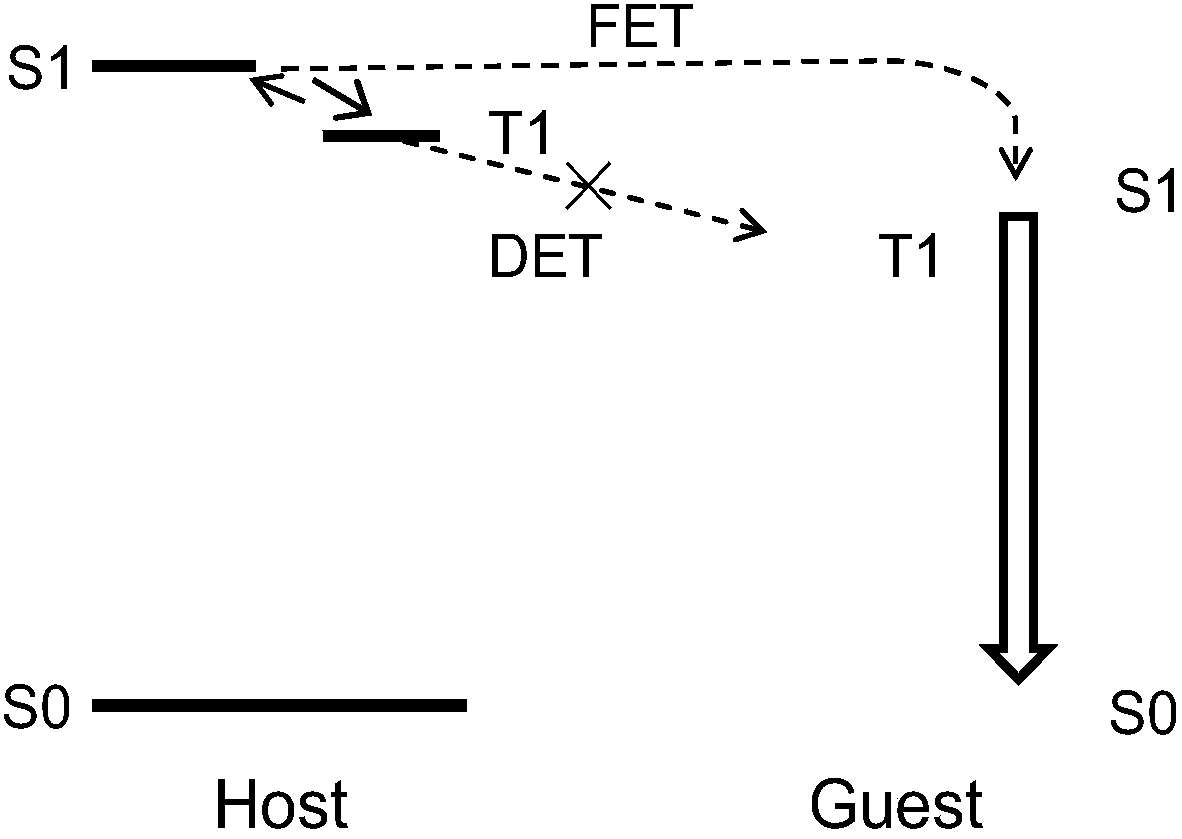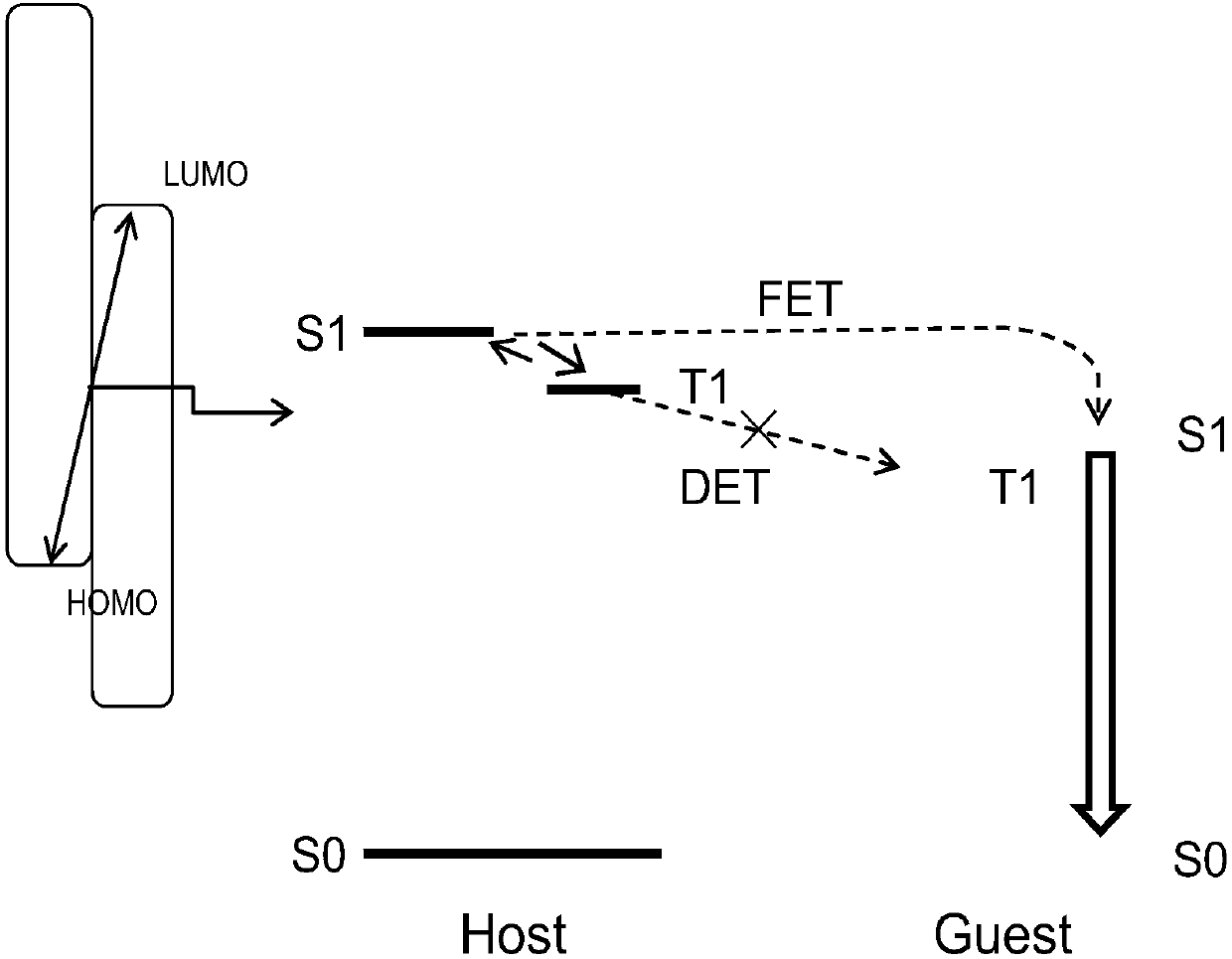Organic electroluminescent device
An electroluminescent device and electroluminescent technology, which can be applied in the direction of electro-solid devices, electrical components, semiconductor devices, etc., and can solve problems such as unfavorable OLED display applications and excessively wide spectrum.
- Summary
- Abstract
- Description
- Claims
- Application Information
AI Technical Summary
Problems solved by technology
Method used
Image
Examples
Embodiment 1
[0097] In this embodiment, blue light-emitting devices are prepared, and these devices have the following properties: image 3 structure shown. The light-emitting layer contains a host material (Host 1) and a fluorescent doped dye (BD 1), wherein the Host 1 material is a material with TADF properties, and the first triplet state of its (n-π) excited state is slightly smaller than that of CT The first triplet state (0.1eV) of the excited state, the singlet energy level of BD1 is 2.75eV, which is lower than the singlet energy level of Host 1. The comparative example uses mCBP and BD2. The main material mCBP does not have CT state transitions, and cannot realize the reverse gap crossing process (RISC) between the excited state triplet state energy level and the excited state singlet state energy level; BD2 has no Hindering group protection. The material structure used in the device is as follows:
[0098]
[0099] The device structure of this embodiment is as follows:
[0...
Embodiment 2
[0119] In this embodiment, green light-emitting devices are prepared, and the structures of these devices are shown in the attached image 3 shown. The light-emitting layer contains double-host TCTA and CzTrz and a fluorescent dopant dye (GD 1). Among them, TACTA and CzTrz can form exciplexes (ACS Appl. Mater. Interfaces 2016, 8, 3825-3832) to achieve delayed fluorescence. GD1 is a fluorescent dye protected by a bulky hindering group. In the comparative example, TCTA and CzTrz are respectively used as main materials, and GD2 is a contrasting fluorescent dye. The material structure used in the device is as follows:
[0120]
[0121] An organic electroluminescence device was prepared in the same manner as in Example 1 above, and the structure of the light-emitting device was as follows:
[0122] ITO(150nm) / NPB(40nm) / TCTA:(100%)CzTrz:(5%)GD 1(30nm) / Bphen(20nm) / LiF(0.5nm) / Al(150nm)
[0123] Among them, the percentages in parentheses before CzTrz and GD1 indicate the doping...
Embodiment 3
[0139] In this example, red light-emitting devices doped with fluorescent dyes are prepared, and these devices have the attached image 3 structure shown. The light-emitting layer includes a host material (Host3) and red fluorescent doped dye (RD 1). Wherein Host3 is a host material with delayed fluorescence properties. RD1 is a fluorescent dye protected by a bulky hindering group. In the comparative example, Host4 without TADF properties was selected as the main body, and RD2 was used as the contrast dye. The material structure used in the device is as follows:
[0140]
[0141] Prepare an organic electroluminescence device in the same manner as in Example 1 above, and the structure of the light-emitting device is as follows:
[0142] ITO(150nm) / NPB(40nm) / Host 3:(5%)RD 1(30nm) / Bphen(20nm) / LiF(0.5nm) / Al(150nm)
[0143] Among them, the percentage in parentheses before RD1 indicates the fluorescent dye doping concentration.
PUM
 Login to View More
Login to View More Abstract
Description
Claims
Application Information
 Login to View More
Login to View More - R&D
- Intellectual Property
- Life Sciences
- Materials
- Tech Scout
- Unparalleled Data Quality
- Higher Quality Content
- 60% Fewer Hallucinations
Browse by: Latest US Patents, China's latest patents, Technical Efficacy Thesaurus, Application Domain, Technology Topic, Popular Technical Reports.
© 2025 PatSnap. All rights reserved.Legal|Privacy policy|Modern Slavery Act Transparency Statement|Sitemap|About US| Contact US: help@patsnap.com



